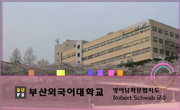Most Japanese Researchers and Business Practitioners recognize that Japanese department stores are in a period of decline. In spite of this decline, department stores in Japan still represent a six trillion yen market. Although department stores compr...
http://chineseinput.net/에서 pinyin(병음)방식으로 중국어를 변환할 수 있습니다.
변환된 중국어를 복사하여 사용하시면 됩니다.
- 中文 을 입력하시려면 zhongwen을 입력하시고 space를누르시면됩니다.
- 北京 을 입력하시려면 beijing을 입력하시고 space를 누르시면 됩니다.
https://www.riss.kr/link?id=A100255412
- 저자
- 발행기관
- 학술지명
- 권호사항
-
발행연도
2014
-
작성언어
English
- 주제어
-
KDC
325
-
등재정보
01
-
자료형태
학술저널
-
수록면
1943-1944(2쪽)
- 제공처
-
0
상세조회 -
0
다운로드
부가정보
다국어 초록 (Multilingual Abstract)
Most Japanese Researchers and Business Practitioners recognize that Japanese department stores are in a period of decline. In spite of this decline, department stores in Japan still represent a six trillion yen market. Although department stores comprise a significant sector of the Japanese economy, there remain few studies dedicated to research on department stores. In contrast to the extant research, the current study relates to consumer behavior as it relates to the decline in department store sales. This focus is poorly represented in the literature. Specifically, the current study addresses two key problems. First, there exists a lack of discussion related to the category under which department stores can be classified. Second (and as alluded to above), there is a lack of unified research on department stores in the fields of commercial science, business administration, and marketing. To redress these shortcomings, the current study seeks to elucidate the factor of internal and external competitive superiority about the business category of Japanese department store. First, however, it is necessary to verify whether consumers recognize differences between department stores and other retail categories. Further, it is necessary to explain the nature of that difference. Using a sample of 246 Japanese respondents with internet research, I explore the degree to which consumers recognize department stores and Shopping Centers. Respondents were generated using service provided by Macromill.inc. The sample for this study consisted of internet users from randomly selected in Hyogo, Osaka, and Kyoto prefectures, in which the competition between department stores and Shopping Centers is keenest. And, this study adhere fundamentally to the scales of store images developed by Sakai (2012). The scales consisted of 28 items were measured on 7-point Likert-type opinion statements ranging from strongly agree (7) to strongly degree (1). I then performed t-test and a confirmatory factor analysis on participants’ responses. Results of this analysis served to identify differences in participants’ recognition of department stores and Shopping Centers. Result of t-test analysis demonstrated that 18 of 24 items are significantly different between them. Results of the factor analysis further demonstrated that department stores are characterized by Reliability of goods and services and Popular. Shopping Centers are also characterized by Reliability of goods and services and Popular, but are also perceived to have Convenient locations or institutions.
동일학술지(권/호) 다른 논문
-
COUNTRY OF ORIGIN AND BRAND IMAGE EFFECTS ON GAME EVALUATIONS
- 글로벌지식마케팅경영학회
- Sang Jin Kim
- 2014
- 01
-
GAME MARKETING FROM PONG TO LEAGUE OF LEGENDS
- 글로벌지식마케팅경영학회
- Yuri Seo
- 2014
- 01
-
DOES ENTREPRENEURIAL MARKETING MATTER?
- 글로벌지식마케팅경영학회
- Reynaldo Dannecker Cunha
- 2014
- 01
-
- 글로벌지식마케팅경영학회
- Joonheui Bae
- 2014
- 01




 코리아스칼라
코리아스칼라


